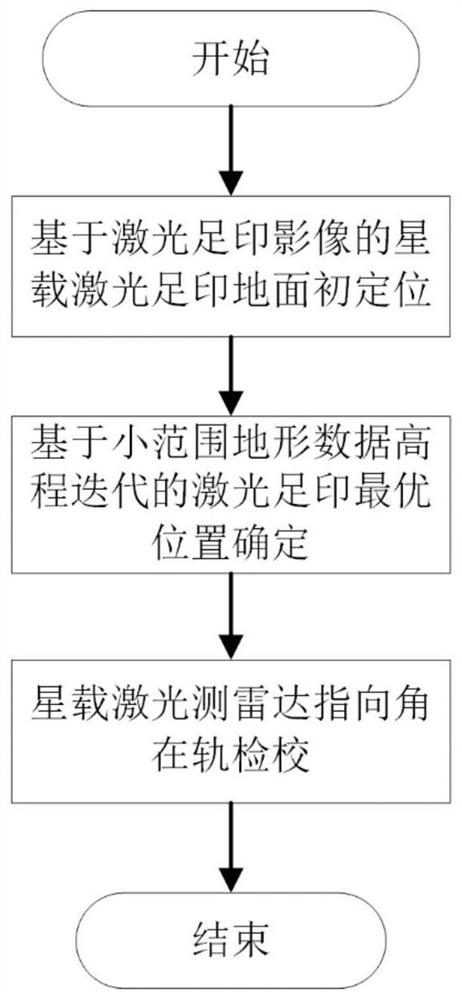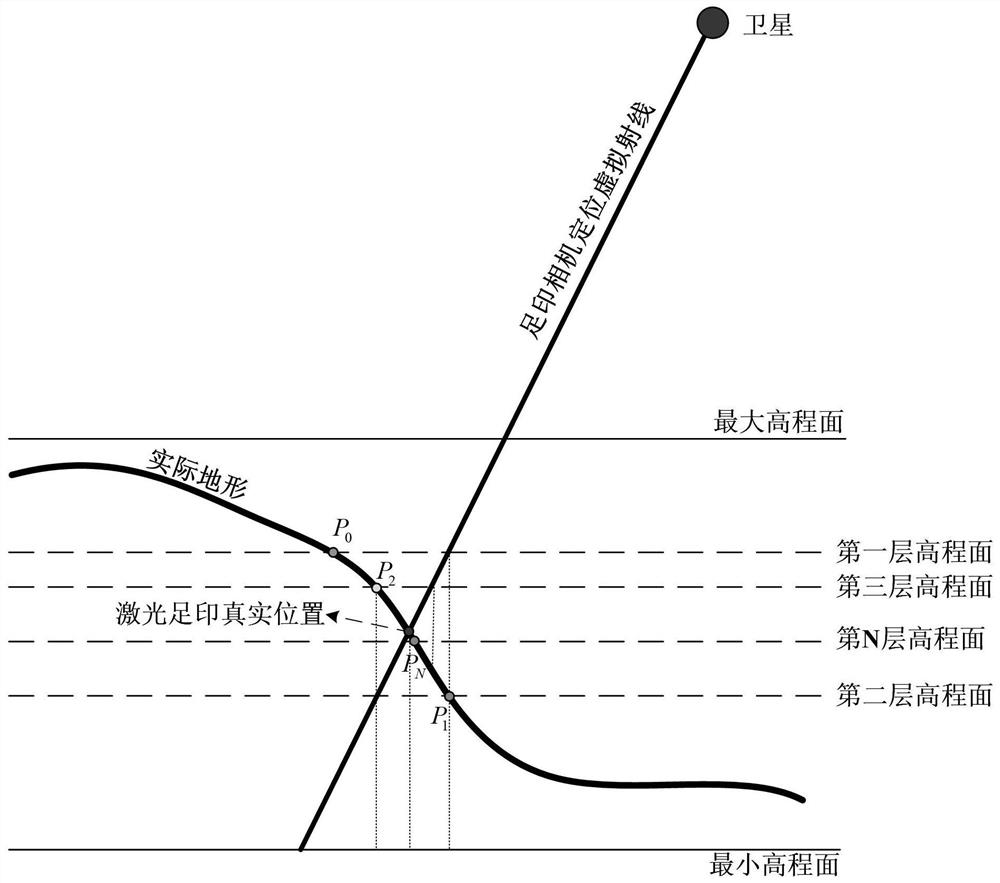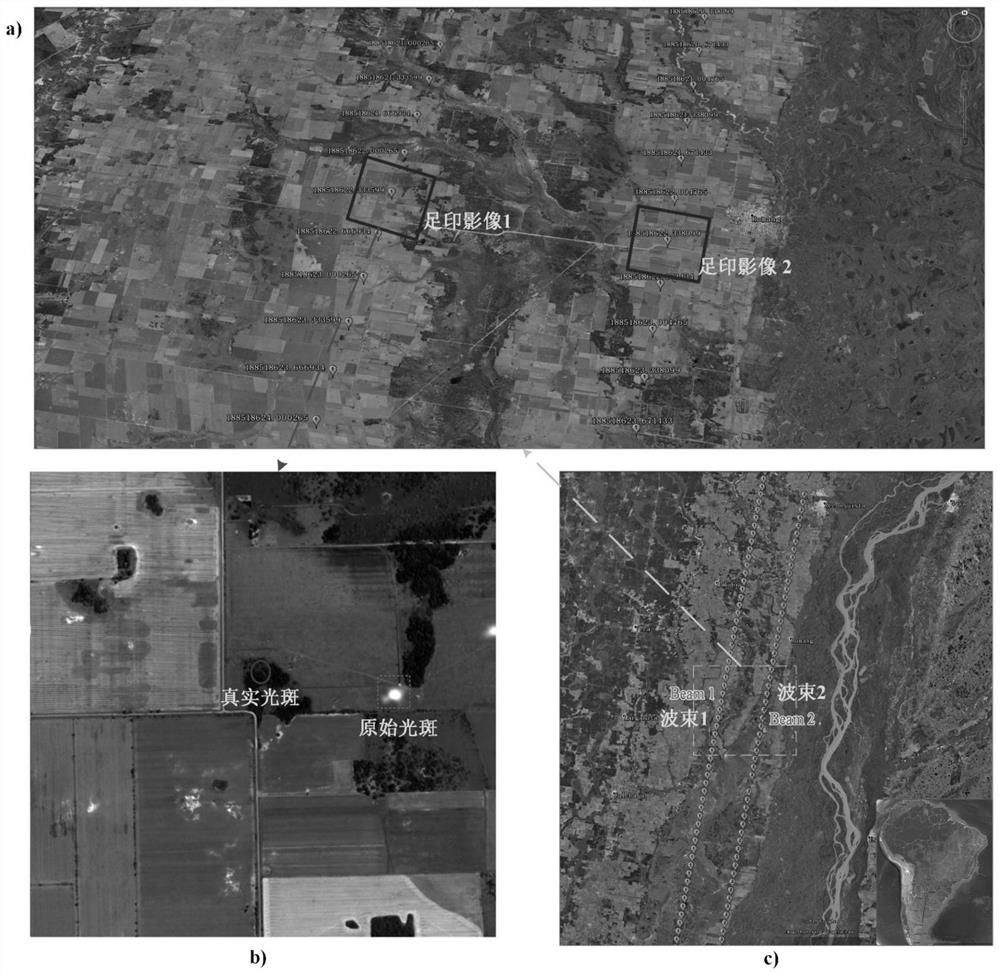A Laser Pointing On-orbit Calibration Method Based on Spaceborne Laser Monolithic Footprint Image
A laser pointing and laser technology, applied in the re-radiation of electromagnetic waves, instruments, measuring devices, etc., can solve the problems of low success rate, large manpower and material resources, imaging difficulties, etc., achieving low cost investment, high success rate, and improved geometric positioning. The effect of precision
- Summary
- Abstract
- Description
- Claims
- Application Information
AI Technical Summary
Problems solved by technology
Method used
Image
Examples
Embodiment Construction
[0017] In order to make the object, technical solution and advantages of the present invention clearer, the present invention will be further described in detail below in conjunction with the embodiments and accompanying drawings. According to the basic characteristics of the space-borne lidar system equipped with footprint cameras, the present invention, during the operation of the satellite in orbit, while the laser is observing the earth, the footprint cameras are synchronously turned on to capture laser footprints, and the laser footprint image and small-scale terrain are obtained The data quickly determines the centroid position of the laser ground footprint, which is used as the ground reference control of the present invention.
[0018] Such as figure 1 As shown, the laser pointing on-orbit calibration method based on the spaceborne laser monolithic footprint image proposed by the present invention specifically includes the following steps:
[0019] Step 1. Initial gro...
PUM
 Login to View More
Login to View More Abstract
Description
Claims
Application Information
 Login to View More
Login to View More - R&D
- Intellectual Property
- Life Sciences
- Materials
- Tech Scout
- Unparalleled Data Quality
- Higher Quality Content
- 60% Fewer Hallucinations
Browse by: Latest US Patents, China's latest patents, Technical Efficacy Thesaurus, Application Domain, Technology Topic, Popular Technical Reports.
© 2025 PatSnap. All rights reserved.Legal|Privacy policy|Modern Slavery Act Transparency Statement|Sitemap|About US| Contact US: help@patsnap.com



